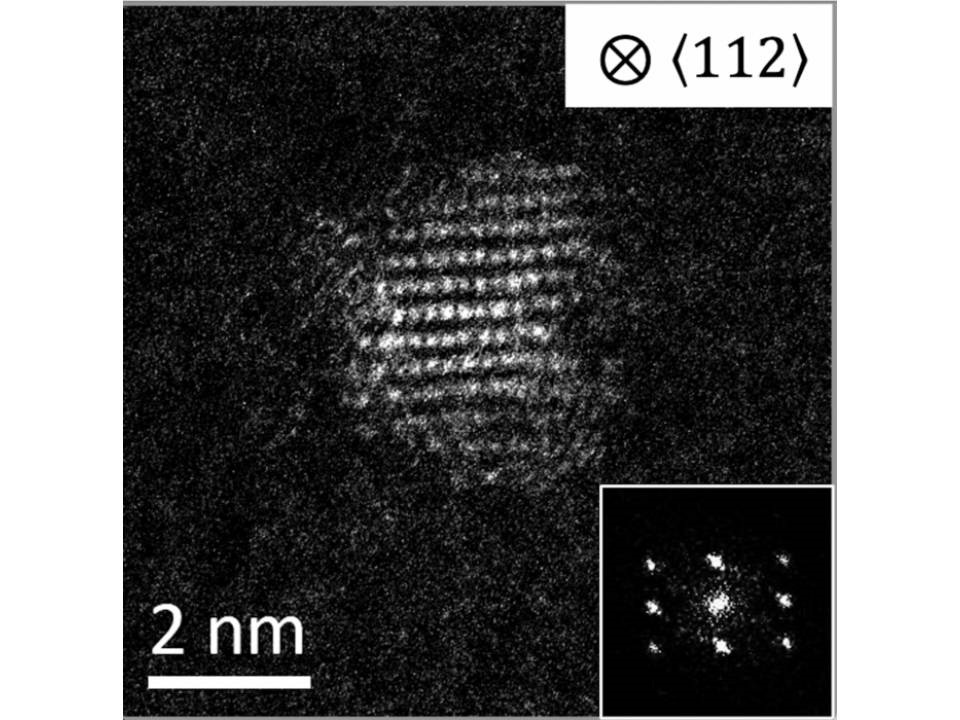
An image of quantum dots taken under an electron microscope. These quantum dots were produced in the Hecht Lab using de novo proteins. Each of them is 2 nanometers in diameter, an important factor since particle size determines the color they glow, or fluoresce, in. Credit: Courtesy of the Hecht and Scholes Labs
Quantum dots are fluorescent nanocrystals with applications ranging from the manufacturing of LED screens and solar panels to the tagging of molecules in biological systems. Quantum dots are typically produced in industrial settings using high temperatures and toxic, expensive solvents that can be harmful to the environment. Now, researchers from Princeton University’s Department of Chemistry have developed a new method using a novel, lab-engineered protein to catalyze quantum dot synthesis at room temperature using water as a solvent.
The reaction to produce cadmium sulfide (CdS) quantum dots was facilitated using a de novo protein called ConK, which was first isolated at Princeton’s Hecht Lab in 2016, from a large combinatorial library of proteins. The researchers previously found that ConK enabled the survival of E. coli in otherwise toxic concentrations of copper, which suggested the protein may be useful for metal binding and sequestration. Applying this function to the synthesis of quantum dots, the team found that ConK breaks the amino acid cysteine into several products including hydrogen sulfide, which can act as an active sulfur source to react with the metal cadmium and ultimately produce CdS quantum dots.
The protein slowly generates the active sulfur source over time, and the process allows the researchers to tune the nanoparticle size, which determines the color the quantum dots fluoresce in. The end products comprise around 100 atoms and are about 2 nm across in size, making them small enough to penetrate some biological barriers and potentially be used for biological tagging and imaging applications. Because the process can be conducted at room temperature without the use of toxic solvents, it represents a more cost-effective and environmentally-friendly method for producing CdS quantum dots. The research also demonstrates the value of de novo proteins as unique, designable tools for synthesizing functional materials. This study was published in the Proceedings of the National Academy of Sciences.
“The quantum dots we’re making aren’t great quality yet, but that can be improved by tuning the synthesis,” explained lead author Leah Spangler. “We can achieve better quality by engineering the protein to influence quantum dot formation in different ways.”